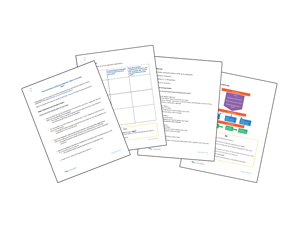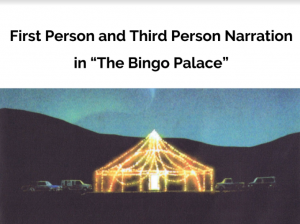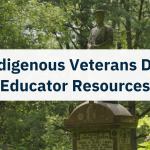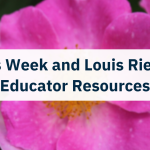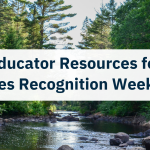Include Indigenous Perspectives Through Novel Studies
Reading novels by Indigenous authors enables you to introduce diverse voices to your English classes while meeting curricular outcomes. Novel studies of Indigenous literature let you discuss literary devices, character and plot development, and theme as usual. You also benefit from incorporating authentic Indigenous voices and perspectives into your classroom.
Indigenous Perspectives
We often ask our learners to act as educators and explain their cultures to their peers. It can become tiresome for learners—another option is bringing in guest speakers to talk about their cultures. Finding guest speakers, especially Elders, and asking them to share their experiences is always the best option. However, they are not always available during your class times. Novels by Indigenous authors enable your learners to begin exploring various Indigenous Peoples’ experiences.
While reading these novels, Indigenous learners will see themselves reflected in the literature you use in class. They will also hear Indigenous voices conveyed through your course material. These learners will benefit from seeing an accurate depiction of themselves in the media viewed in your class. Non-Indigenous learners will have the opportunity to hear voices from a culture other than their own in the course material. That can help learners become more empathetic and respectful of other cultures.
Breaking Stereotypes Through Novel Studies
All too often, mainstream literature shows negative portrayals of Indigenous people. The Western genre and other period literature frequently portray Indigenous people as either stereotypical “Plains-Indian Noble Savages” or terrifying threats to settlers. These one-dimensional and incorrect depictions of Indigenous people result from mainstream authors casting their worldview and misconceptions onto Indigenous characters. That creates and propagates stereotypes. Incorporating literature by Indigenous authors will go a long way towards breaking down these portrayals of Indigenous people and allowing your learners to see themselves reflected as multi-dimensional people with needs, wants, desires, and challenges.
Authentic Portrayals
Your non-Indigenous learners will benefit from seeing authentic portrayals of Indigenous people and cultures instead of the manufactured view generally reflected in mainstream media. Seeing fully-developed Indigenous characters that don’t fit neatly into stereotypes they have previously heard may help your learners empathize with their Indigenous peers and understand their misguided or incorrect preconceptions. They may also begin to understand the challenges that many Indigenous Peoples face better.
Building Empathy
To achieve the outcome of learners beginning to understand and become more empathetic towards different cultures, ensure learners think about the author or main character’s perspective or point of view while reading. Learners may need guidance to understand characters’ perspectives and how their culture, language, and history shape how they see the world and interact with people and things in their lives.
It is simply not enough to ask learners questions like “How is this character different to or the same as you?” Making comparisons is a good place to start, but learners must understand the characters’ points of view by learning about the history and culture portrayed. As an educator, you can do some research to start. You can have learners gather information from the novel you are studying to illustrate how the character’s worldview or history affects how they see certain situations or react to events. Encourage learners not to put themselves in the characters’ shoes if they are not of that culture. Ask them instead to imagine how the character would be feeling.
Novel Study Options
In this post, I highlight three novels written by Indigenous authors that you could use in your classes: Grey Eyes by Frank Christopher Busch, The Lesser Blessed by Richard Van Camp, and The Bingo Palace by Louise Erdrich. These novels are most appropriate for high school classes. There are novels by Indigenous authors for every age group, covering various subjects. You can explore the following lists to find novels by Indigenous authors that are appropriate for different age groups and genres.
Each novel discussed here has lessons on Learning Bird to support learners’ study. These lessons cover different elements of the novels. Educators can use them together with other lessons in the playlist or individually to focus on one skill or piece of information.
Grey Eyes, by Frank Christopher Busch
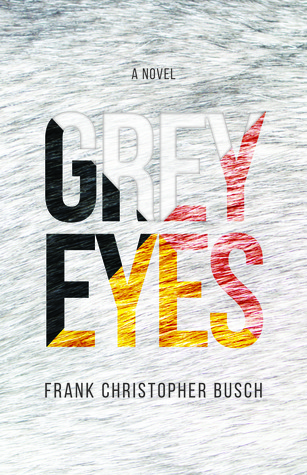 Grey Eyes is a novel about a young boy named Little Grey Bear Boy, destined to protect his nehiyawak community. The novel follows him from birth to adulthood. It explores Little Grey Bear Boy coming to terms with his destiny, powers, and responsibility. This novel explores traditional nehiyawak (Cree) practices and ways of being and understanding the world, even though there is a fantastic element. It can be an interesting way to walk your learners through learning about this Indigenous culture through the lens of a young Cree man instead of piecing together a false impression from unreliable sources.
Grey Eyes is a novel about a young boy named Little Grey Bear Boy, destined to protect his nehiyawak community. The novel follows him from birth to adulthood. It explores Little Grey Bear Boy coming to terms with his destiny, powers, and responsibility. This novel explores traditional nehiyawak (Cree) practices and ways of being and understanding the world, even though there is a fantastic element. It can be an interesting way to walk your learners through learning about this Indigenous culture through the lens of a young Cree man instead of piecing together a false impression from unreliable sources.
One example of a Learning Bird lesson that supports this novel is Persuasive Essay: Exploring Indigenous Topics in Grey Eyes. This lesson asks learners to write a persuasive essay that explores topics linked to traditional nehiyawak ways of living in Grey Eyes.
The Lesser Blessed, by Richard Van Camp
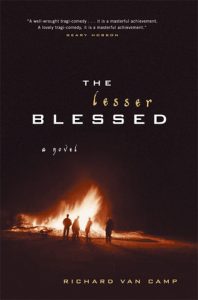 The Lesser Blessed is a coming-of-age story about Larry, a member of Dogrib Nation. The story follows Larry on a journey of acceptance and healing as he handles events from his past and the challenges he faces in the present. This novel conveys how someone can overcome the challenges they face while providing keen insight into the challenges themselves. Larry faces discrimination, poverty, the results of addiction, and a haunting past trauma. This novel can help you open up a discussion about these topics. Even more so, it can open up a space for learners to discuss the strategies they use to persevere in their own lives.
The Lesser Blessed is a coming-of-age story about Larry, a member of Dogrib Nation. The story follows Larry on a journey of acceptance and healing as he handles events from his past and the challenges he faces in the present. This novel conveys how someone can overcome the challenges they face while providing keen insight into the challenges themselves. Larry faces discrimination, poverty, the results of addiction, and a haunting past trauma. This novel can help you open up a discussion about these topics. Even more so, it can open up a space for learners to discuss the strategies they use to persevere in their own lives.
The Learning Bird lesson “History and Intergenerational Trauma” explores the historical context of The Lesser Blessed. This lesson will help learners understand some of the events shaping Larry’s worldview and experiences.
The Bingo Palace, by Louise Erdrich
The Bingo Palace 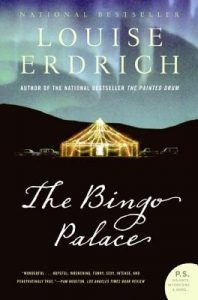 is a novel about a young man named Lipsha, who returns to his family’s reservation. While there, he learns to take responsibility for his choices and actions. This novel focuses on the ideas of luck and chance. The novel follows many characters and often references their “luck.” The casino, an important institution in the community, reinforces the themes of luck and chance. This novel is a great way to discuss the concepts of choice, responsibility, and autonomy with your learners. Many learners may be taking on more responsibility in their lives. This novel can help them work through how to do that as an adult.
is a novel about a young man named Lipsha, who returns to his family’s reservation. While there, he learns to take responsibility for his choices and actions. This novel focuses on the ideas of luck and chance. The novel follows many characters and often references their “luck.” The casino, an important institution in the community, reinforces the themes of luck and chance. This novel is a great way to discuss the concepts of choice, responsibility, and autonomy with your learners. Many learners may be taking on more responsibility in their lives. This novel can help them work through how to do that as an adult.
The lesson First Person and Third Person Narration in The Bingo Palace explores these two points of view. It gives learners space to practice transforming first-person narration into a third-person narration. It may help your learners understand the effect different narrative styles can have on writing.
Learning Bird Novel Study Resources
The lessons included here are just one example for each novel. You can find these lessons and others by searching for the novel’s title in the keyword search bar. Soon, finding resources to support novels will be even easier on the Learning Bird platform. A new filter will list the names of all the novels and plays for which we have supporting resources.

What is your favourite novel by an Indigenous author? How would you study it with your learners? Please email us to let us know which novels you’ve successfully used with your learners.



